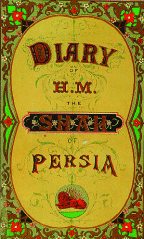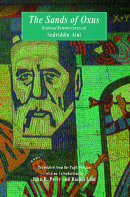An Enduring Love, My life with the Shah: Engelska 2004
An Enduring Love, My life with the Shah
33,66 $
Dela
Wishlist
From Publishers Weekly
The memoir of Farah (Diba) Pahlavi, widow of the Shah of Iran, seems, at first glance, like a clone of Noor's bestselling Leap of Faith. Both queens were intelligent young women when they met and married their older kings; both remain discreet about their intimate lives with their husbands (who both loved piloting planes and playing with their children); both immersed themselves, as new queens, in cultural programs and social betterment work for their people; and both end their memoirs shortly after the deaths of their husbands. The parallels are almost uncanny - at least until midway through Pahlavi's story, when the real differences emerge. In 1963, the Shah began his "white revolution" to modernize Iran by instituting land reform, women's rights and workers' rights; Communists and fundamentalist clerics vehemently opposed these changes. In Pahlavi's eyes, the monarchy stood for liberalization, even if its enforcement agencies were condemned worldwide for human rights abuses. To her, criticism of the monarchy only supported Khomeini's Islamic fundamentalist opposition. As the insurgency gained strength and the royal family weighed exit strategies....
more
From Publishers Weekly
The memoir of Farah (Diba) Pahlavi, widow of the Shah of Iran, seems, at first glance, like a clone of Noor's bestselling Leap of Faith. Both queens were intelligent young women when they met and married their older kings; both remain discreet about their intimate lives with their husbands (who both loved piloting planes and playing with their children); both immersed themselves, as new queens, in cultural programs and social betterment work for their people; and both end their memoirs shortly after the deaths of their husbands. The parallels are almost uncanny - at least until midway through Pahlavi's story, when the real differences emerge. In 1963, the Shah began his "white revolution" to modernize Iran by instituting land reform, women's rights and workers' rights; Communists and fundamentalist clerics vehemently opposed these changes. In Pahlavi's eyes, the monarchy stood for liberalization, even if its enforcement agencies were condemned worldwide for human rights abuses. To her, criticism of the monarchy only supported Khomeini's Islamic fundamentalist opposition. As the insurgency gained strength and the royal family weighed exit strategies....
more








